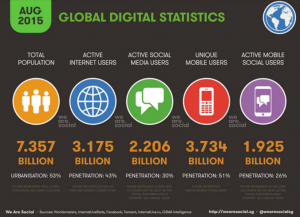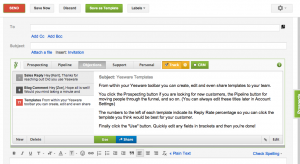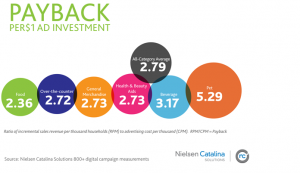— June 28, 2017

rawpixel / Pixabay
Brand equity is one of those business terms that’s thrown around a lot and sounds quite sophisticated, but really, it’s pretty straightforward and an important part of any business’s growth plan. For small businesses, in particular, understanding what brand equity is and how to build positive equity for their business is a keystone for success.
Today, we’ll get into the nuts and bolts of brand equity, and provide a roadmap for building brand equity for your small business. Let’s dive right in!
What is brand equity?
First things first, let’s define this term. Brand equity is,
“The tangible and intangible value that a brand provides positively or negatively to an organization, its products, its services, and its bottom-line derived from consumer knowledge, perceptions, and experiences with the brand. “
In simple terms, brand equity is the impact a business’s brand has on its customer perception and either adds to or detracts from the inherent value of the business.
When a company has strong brand equity, it’s good for business. It means that the perceived values, ethics, products, and culture are positive and those values translate into the marketplace, which show up in business results. For example, companies with positive brand equity can charge more for a product because the brand’s value is high, and consumers are comfortable paying more for a product when its company’s reputation is outstanding.
Now that we know what brand equity is, how do you go about building positive brand equity for your small business?
Follow along, take notes, and by the end of this article, you’ll know the four steps needed to build your equity from scratch.
4 steps to building small business brand equity
1. Know your difference (USP)
A great brand starts with a solid understanding of its unique selling proposition (USP). A business’s USP is what sets it apart from the competition; it’s what defines a company in a crowded marketplace. Your USP doesn’t have to be an elaborate difference from others in your industry, but it needs to be memorable to be effective.
Your USP is important when building brand equity as it becomes the foundation for your brand recognition. Brand equity is all about instantaneous recognition and positive associations, and your USP is a way to develop positive sentiments about your brand, while positioning your business as distinct from competitors.
2. Solidify your logo, slogan, and brand basics
With your USP in place, it’s time to get your business image out to the public. Before you print a business card, flyer, or set up your website or social media accounts, ensure your logo, slogan, and other basic brand elements are in place. Brand equity is largely based on the visual representation of your small business, and without these critical elements, your business will be behind the eight ball.
Having a professionally designed logo, slogan (if applicable), colors, and fonts are all pieces of establishing a brand. These elements will be used countless times across various media to showcase your business in hopes of building awareness, and you guessed it: brand equity!
If design isn’t your strong suit, there are options for you. Work with a professional designer who will do the heavy lifting and create your perfect logo.
3. Tell your story with emotion
Once your brand basics are in order, then it’s time to tell your story. Marketing is essentially storytelling, so figure out what problem you’re solving for your prospective clients with your product or service. From there, develop a narrative that speaks to the need for your product or service, but in a way that draws out emotion from your audience.
For example, if you own a pet spa, touch on how busy pet owners are, but how they love their pets just like other members of the family. You know they want to give their pets the best life possible and that includes grooming. Your pet spa solves their time and attention dilemma by taking a major to-do item off their list and giving owners the reassurance that while their pets are in your hands, they’ll be treated just like family.
You can feel the difference when a brand puts heart and soul behind their story and potential customers respond to that emotional pull.
Part of building brand equity is generating buzz about your business before you open or before you expect people to make purchases from you. Start sharing your story informally to get eyes on your business and to help people about your offerings. Consumers respond to emotional stories, as they can usually identify with the sentiment and by being relatable, you’re establishing positive brand equity. So, start communicating your story early and often. When your business is established and your brand equity has a leg to stand on, that’s when you can go after the sale.
4. Be a consistent presence in the market
The final piece for building brand equity is to get your story and your brand out in the marketplace. There are countless ways to promote your business across various channels to reach your largest audience. The key is to have a consistent image and message no matter the medium. From print materials (
There is a fine line between making yourself known and becoming a nuisance to your audience. Gauge how they’re responding to your social media posts or email marketing campaigns to see what your audience likes and how frequently they want to hear from you.
When you’ve figured out the right communication rhythm, stick with it. Your diligence will pay off when your positive brand equity is high and your revenue starts to soar.
The ultimate goal when building a business is to have instant recognition. You want people to see your logo or tagline or brand imagery and associate them with your business; that’s what brand equity is all about. Use these four tools to set your business up for positive brand equity and long-term success.
Business & Finance Articles on Business 2 Community
(75)
Report Post






